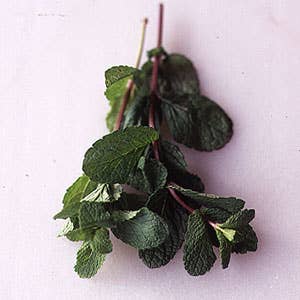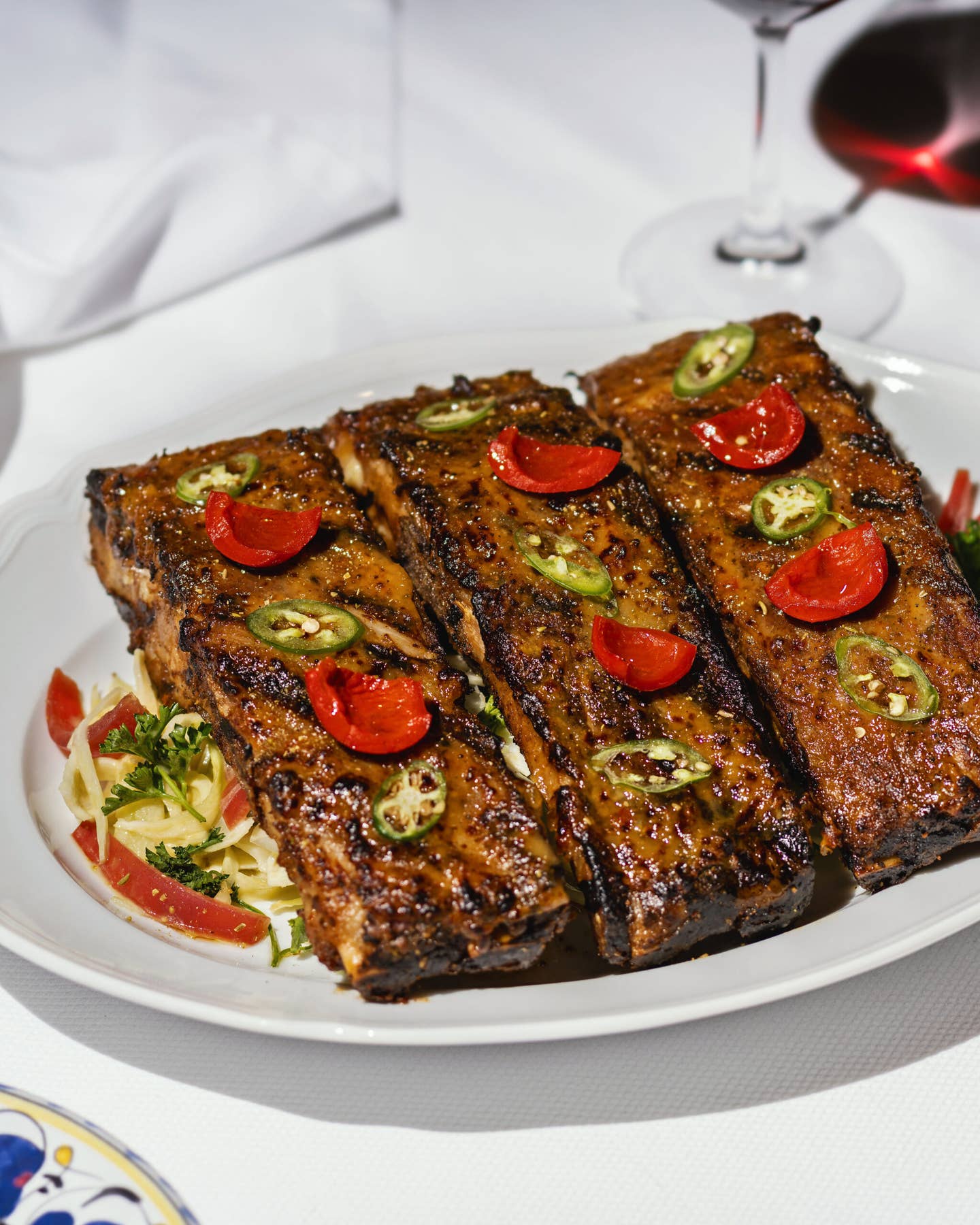
In England, serving roast leg of lamb without mint sauce—at Easter or any other time—is widely considered an egregious offense to taste and tradition. So integral is this combination to the culture that even the most dastardly of boarding school dining halls will dole out bowls of mint sauce—a simple composition of fresh mint (usually spearmint), sugar, and vinegar (from malt to cider)—when lamb is the Sunday roast. One of the first recipes for mint sauce appears in Isabella Beeton's 1861 Book of Household Management. (Mint jelly—actually apple jelly into which fresh mint is incorporated—is a more recent creation.) In its most basic form, however, mint sauce can be traced back to ancient Rome, where spearmint (possibly the oldest of the twenty-five or so species of mint, and the one preferred by cooks) was grown and pickled in vinegar. The Romans introduced the plant to English soil, and mint went on to become one of the prime ingredients in the medieval English verde sawce, or "green sauce". The acidic bite of traditional mint sauce provides a perfect counterpoint to the meaty richness of lamb, while mint jelly offers a gentler but equally refreshing, and far more wine-friendly, alternative. In either case, as the English botanist John Gerard pointed out in his late-16th-century Herball, "The smell of mint does stir up the minde and the taste to a greedy desire of meat."
Keep Reading
Continue to Next Story










